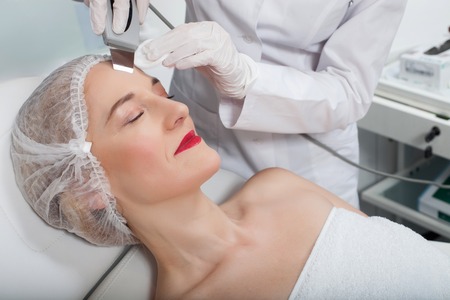1. Introduction to Cosmetic Treatments in the UK
Cosmetic treatments have seen a remarkable surge in popularity across the UK over the past decade, reflecting not only advances in medical aesthetics but also shifting cultural attitudes towards beauty and self-care. From high street clinics in London to boutique practices in Manchester and Edinburgh, Britons are increasingly turning to non-surgical enhancements such as dermal fillers, Botox, and advanced skin rejuvenation procedures. This growing interest is deeply intertwined with local values, media influences, and societal norms that shape what is considered attractive or desirable within British culture. The UKs beauty ideals often blend a sense of understated elegance with individuality, which means treatment choices can vary widely—from subtle tweaks designed to enhance natural features to more dramatic transformations inspired by celebrities and social media trends. As cosmetic interventions become more mainstream, understanding how everyday lifestyle habits and underlying health conditions affect both the demand for and risks associated with these treatments is becoming ever more essential for practitioners and clients alike.
2. British Lifestyle Factors Influencing Cosmetic Treatment Risks
When considering cosmetic treatments in the UK, it’s crucial to reflect on how distinctive British lifestyle habits can influence both the risks and recovery associated with these procedures. Our everyday choices—what we eat, whether we smoke or drink, and how often we get moving—have a direct bearing on our bodies’ resilience and ability to heal. Let’s take a closer look at some of the most common UK lifestyle patterns and explore how they intersect with cosmetic treatment outcomes.
Diet: The British Plate
The classic British diet is evolving, but many still enjoy hearty meals featuring processed foods, saturated fats, and a lower intake of fresh fruit and vegetables. This nutritional profile can impact skin health, slow down healing, and increase the risk of complications such as bruising or infection after aesthetic procedures. Incorporating more antioxidant-rich foods—think berries, leafy greens, oily fish—can help prepare your body for a smoother recovery.
Smoking and Alcohol Consumption
Smoking rates have dropped but are still significant in certain areas of the UK. Smoking impairs blood flow and delays wound healing—a critical concern for anyone undergoing injectables or surgical enhancements. Similarly, while enjoying a pint at the pub is part of local culture, excessive alcohol intake can dehydrate the skin, increase swelling post-treatment, and raise the likelihood of adverse reactions.
Exercise Habits
Physical activity levels vary widely across Britain. Regular exercise boosts circulation and immune function, supporting better outcomes from cosmetic interventions. However, high-intensity workouts immediately after treatment may worsen swelling or disrupt delicate healing tissue.
Lifestyle Impact Table
| Lifestyle Factor | Typical UK Habits | Impact on Cosmetic Treatments |
|---|---|---|
| Diet | High in processed foods; low in fresh produce | Poor wound healing, increased inflammation |
| Smoking | Still prevalent in some regions | Delayed recovery, higher complication risk |
| Alcohol | Regular social drinking culture | Increased bruising/swelling; dehydration effects |
| Exercise | Diverse activity levels; sedentary lifestyles common | Fit individuals recover faster; overexertion can impede healing |
The interplay between these lifestyle factors and cosmetic treatment risks is profound. By recognising how our daily routines shape our readiness for aesthetic enhancements, we empower ourselves to make safer decisions and optimise our results. Consider making small adjustments before your next treatment—your future self (and your skin) will thank you.

3. Prevalence of Underlying Health Conditions in the UK
When considering the safety of cosmetic treatments, its essential to acknowledge the underlying health conditions prevalent within the British population. In the UK, conditions such as cardiovascular disease and diabetes are notably common, and they play a significant role in altering the risks associated with aesthetic procedures. According to the British Heart Foundation, over 7 million people live with heart or circulatory diseases, making it one of the leading health concerns nationwide. Similarly, Diabetes UK reports that more than 4.3 million people are currently diagnosed with diabetes, with many more living undiagnosed.
These underlying issues can have a profound impact on how individuals respond to cosmetic treatments. For instance, cardiovascular disease may increase susceptibility to complications like poor wound healing or increased risk of infection following even minor procedures. Diabetes, on the other hand, can alter skin integrity and slow down recovery time, which requires practitioners to be extra vigilant during both pre-treatment assessment and post-treatment care.
The British healthcare system places strong emphasis on managing these chronic conditions, but their high prevalence means that practitioners in clinics across London, Manchester, and beyond must always take a tailored approach. By understanding how these widespread health problems interact with cosmetic interventions, both clients and practitioners can make informed choices—balancing aesthetic goals with long-term wellbeing.
4. Personal Experiences: Navigating Treatments with Health in Mind
Living in the UK, my journey through cosmetic treatments has been deeply intertwined with my own health considerations and the nuances of British lifestyle. As someone who values both well-being and aesthetics, I’ve found that making informed choices is essential—especially when grappling with underlying health issues or common lifestyle factors such as high stress, irregular sleep patterns, or dietary habits typical in Britain. Here’s a glimpse into how these elements come together during the decision-making process for cosmetic enhancements.
Understanding the Local Context
The unpredictable British weather, our love for outdoor activities despite limited sunshine, and the prevalence of conditions like eczema or rosacea due to damp climates, all play a part in how cosmetic treatments interact with our bodies. Through personal experience, I’ve learned that even something as simple as fluctuating Vitamin D levels can influence skin healing post-treatment. Consulting practitioners who genuinely understand local health trends—like those familiar with NHS guidelines or have experience handling UK-specific allergies—has made a significant difference in outcomes.
The Balancing Act: Lifestyle vs Treatment Safety
Integrating cosmetic treatments into daily life isn’t always straightforward. For instance, juggling long work hours—a hallmark of British urban culture—can make aftercare routines challenging. It becomes vital to discuss realistic aftercare plans with your provider. Below is a quick reference table highlighting some common lifestyle and health factors in the UK and their potential impact on treatment risks:
| Factor | Common Scenario in the UK | Potential Impact on Cosmetic Treatments |
|---|---|---|
| Weather | Frequent rain and low sunlight | Slower healing; risk of infection if wounds stay damp |
| Dietary Habits | High tea/coffee consumption; lower fresh produce intake | Caffeine may affect bruising/swelling; antioxidants aid recovery |
| NHS Waiting Times | Delays in managing underlying conditions | Existing issues may complicate elective procedures |
| Allergies/Skin Sensitivity | Prevalent eczema/rosacea due to climate | Increased risk of adverse reactions; requires tailored approach |
| Mental Health Awareness | Growing focus but stigma persists | Psycho-social readiness for cosmetic changes often overlooked |
First-Hand Insight: The Value of Transparency and Research
I’ve found it invaluable to be open about every aspect of my health history when consulting with practitioners—even details that might seem irrelevant at first glance. For example, declaring seasonal allergies led my provider to adjust pre- and post-treatment protocols, dramatically reducing my downtime. Additionally, seeking clinics that adhere to Care Quality Commission (CQC) standards gave me extra peace of mind.
Aesthetic Choices Rooted in Wellbeing
This journey has taught me that true beauty flourishes when health is prioritised alongside aesthetics. By embracing a collaborative approach with knowledgeable professionals and staying attuned to both personal wellness and local cultural nuances, the risks associated with cosmetic treatments can be thoughtfully managed—leaving room for confidence and self-expression to shine.
5. Mitigating Risks and Enhancing Outcomes: British Best Practices
When considering cosmetic treatments in the UK, adopting a well-informed and cautious approach is not only wise but essential. Drawing upon my own journey navigating the world of aesthetic procedures, I’ve found that following British best practices—anchored in NHS guidance and local expertise—can make all the difference between a positive experience and an unfortunate outcome.
Consultation: The Foundation of Safety
First and foremost, always seek a thorough consultation with a GMC-registered practitioner. In Britain, this step isn’t just polite formality—it’s the gold standard. Practitioners here are adept at evaluating your individual health history, lifestyle habits, and expectations. I’ve learned that being candid about underlying health conditions (like high blood pressure or diabetes) and lifestyle choices (such as smoking or alcohol consumption) allows professionals to tailor their recommendations for maximum safety.
Embracing Pre-Treatment Protocols
UK clinics often emphasise pre-treatment protocols, which might include pausing certain medications or supplements, hydrating well, or avoiding alcohol before your appointment. These seemingly small adjustments have been proven to significantly reduce bruising, swelling, and other complications—a lesson I can vouch for from personal experience.
Informed Consent and Realistic Expectations
The British approach places tremendous value on informed consent. You should receive detailed information about the procedure, possible side effects, and expected results. This transparency helps you set realistic goals and empowers you to make confident decisions. In my journey, this honesty has always made me feel respected and secure.
Aftercare: The Unsung Hero
Proper aftercare is championed by both private clinics and the NHS. Following specific post-treatment advice—like keeping treated areas clean, avoiding strenuous activities, and attending follow-up appointments—has helped me achieve natural-looking results while minimising risks. Many practitioners provide written aftercare instructions to ensure nothing is left to chance.
The Role of Ongoing Communication
If anything feels amiss during your recovery, prompt communication with your provider is key. British practitioners encourage open dialogue; early intervention can swiftly resolve minor issues before they escalate. My experiences have taught me never to dismiss even mild concerns—it’s better to be safe than sorry.
A Culture of Accountability
Ultimately, the UK’s culture of accountability—from stringent practitioner regulation to robust patient rights—creates an environment where safety comes first. By actively engaging with these best practices, you not only mitigate risks but also enjoy a more rewarding cosmetic treatment journey rooted in care, clarity, and trust.
6. The Role of Healthcare Professionals and Patient Education
When it comes to cosmetic treatments in the UK, the influence of lifestyle and underlying health is deeply intertwined with the role of healthcare professionals.
GPs: The First Line of Advice
For many Britons, General Practitioners (GPs) are the initial port of call for any health-related concern, including cosmetic procedures. GPs have a holistic view of a patient’s medical history, lifestyle habits, and existing health conditions. This background allows them to offer well-rounded advice, flag potential risks, and refer patients to appropriate specialists when necessary. In my experience, having an open dialogue with a GP before considering cosmetic treatment provided not only reassurance but also a personalised risk assessment based on my unique circumstances.
Specialists: Expertise Beyond Aesthetics
The UK is home to highly trained dermatologists, plastic surgeons, and aesthetic practitioners who bring a wealth of expertise to the table. Their understanding goes far beyond the surface; they are trained to evaluate how factors such as chronic illnesses or medication might affect healing times or outcomes. Engaging with these specialists ensures that every angle is considered—something I found invaluable when weighing up options between different treatments.
The Importance of Transparency
Transparent communication forms the backbone of safe cosmetic care in Britain. From my own journey, I learned that asking questions—about credentials, possible side effects, and alternative approaches—was not only welcomed but encouraged by reputable practitioners. This openness helps foster trust and empowers patients to make informed decisions based on accurate information rather than marketing hype or social media trends.
Empowering Patients through Education
Patient education is key in bridging the gap between aspiration and reality. British healthcare providers are increasingly proactive in providing clear guidance on what to expect from cosmetic treatments, including realistic outcomes and post-procedure care tailored to individual lifestyles and health backgrounds. This commitment to education makes all the difference; it transforms what could be a daunting process into one where patients feel confident and supported at every stage.
In summary, the synergy between skilled healthcare professionals and well-informed patients underpins safer cosmetic experiences across the UK. By valuing transparent communication and comprehensive education, both practitioners and patients can navigate the complexities of cosmetic treatments with greater confidence and peace of mind.
7. Conclusion: Aesthetic Aspirations, Health, and British Wellbeing
Reflecting on the journey through cosmetic treatments in the UK, it becomes clear that the pursuit of beauty is intrinsically linked to our overall wellbeing, lifestyle habits, and underlying health. Here, where the appreciation for subtlety and natural enhancement is part of our cultural fabric, Britons are increasingly discerning about how cosmetic interventions fit into their lives. The choices we make—whether it’s a tweakment in a discreet Harley Street clinic or a rejuvenating facial in a local spa—are deeply shaped by our own health realities and daily routines.
The British approach to aesthetics often values authenticity and moderation; we tend to favour enhancements that harmonise with our individuality rather than erase it. This mindset makes it all the more vital to consider the interplay between cosmetic ambitions and personal wellbeing. From my own experience and conversations with professionals across the UK, I’ve learned that those who see lasting results are not just chasing trends—they’re attentive to their bodies, mindful of lifestyle factors like sleep, diet, and stress, and honest about pre-existing conditions when consulting practitioners.
Ultimately, achieving safe and satisfying outcomes from cosmetic treatments is as much about self-awareness as it is about technique or technology. By fostering open discussions with reputable providers and staying informed about how our unique circumstances influence risk, we can make empowered decisions that align with both our aesthetic aspirations and long-term health. In the UK, where wellness is now woven into everyday life as much as style or self-expression, cosmetic journeys are becoming more holistic—reflecting not only how we wish to look but also how we wish to feel and thrive.

